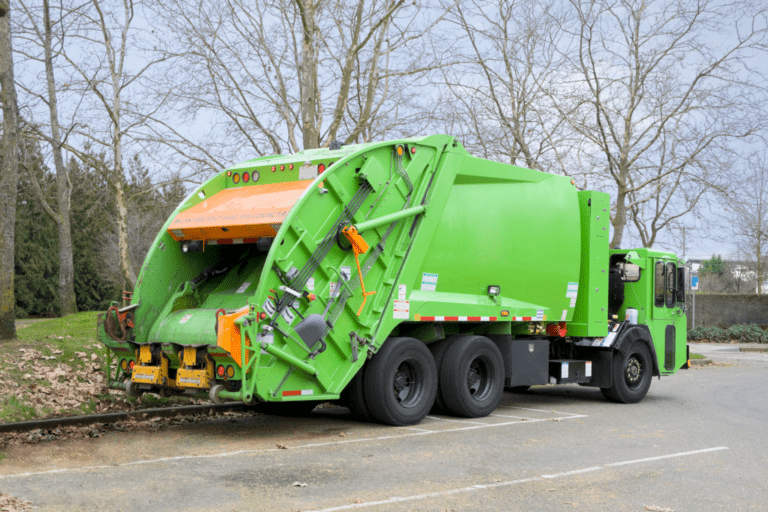As the USPS plans to replace its fleet of more than 200,000 LLV postal delivery vehicles by 2022, excitement has soared over the expectation of a fully electric truck to be part of the bargain. An Ohio-based company called Workhorse Group is set to bid for the more than 6 billion dollar contract, along with Karsan and U.S. players like Oshkosh Corp., and Ford Motor Company.
So what does this mean for the future of delivery and trucking? Whether or not the contract goes through, it is proof that the time for commercial electric vehicle adoption has arrived. Improved battery technology, better reliability, and numerous tax incentives have made the adoption of commercial electric vehicles possible.
By the end of the decade, we could have a few different categories of electric vehicles such as battery- commercial electric vehicles (BCEVs), Plug-in Hybrids (PHEVs), and fuel-cell electrics take up as much as 40% of the commercial electric truck market. That will have a wide-reaching impact on the trucking industry and the world.
The Future of Commercial Electric Vehicles in Trucking and Delivery
When it comes to fleets that rely on medium or light duty trucks, the eTruck market is set to increase dramatically over the next 10 years, with many believing this growth will likely fueled by increased emissions regulations and tax incentives.
Here are 7 potential impacts to the trucking and delivery market to be on the lookout for in the coming years.
1. Electric Vehicle Adoption by Commercial Fleets
McKinsey has already crunched the numbers on how fast they expect commercial fleets to go electric. For light-duty and medium-duty trucks, the expectation is that commercial electric vehicles will outsell small EVs by 2030.
Another source predicts a CAGR of CEVs of 32.7% through 2027, reaching a peak of 1,890,430 units. Short-range vehicles that travel less than 100 miles a day are expected to experience the highest growth rates, especially last-mile delivery trucks.
These types of businesses that typically operate within the current range of CEVs for one recharge will likely make them early adopters of these vehicles.
This is especially true in the passenger transport space, where many companies are deploying non-commercial electric vehicles (like the Tesla model S and others) that are already widely available in the marketplace.
2. Increased Commercial EV Manufacturing and Demand

Out of the the 260,777 commercial electric vehicles expected to be produced by the end of 2020, the increase in demand for reliable and efficient CEVs will drive manufacturing sky-high in the next decade. The biggest players on the market are already increasing capacity in preparation.
Here are 5 commercial EV fleet manufacturers to pay attention to in the coming years:
- BYD(China) — BYD is the largest global commercial electric vehicle producer in terms of total units manufactured. The Chinese company is heavily involved in the short-haul goods market, where it produces trucks for freight handling facilities such as ports and railway yards. It also manufactures buses, construction equipment, and various light, medium, and heavy-duty vehicles
- Daimler (Germany) — The company that owns Mercedes-Benz already launched its fully-electric Freightliner eCascadia truck with a range of 250 miles.
- Rivian (US) — the company that promised to have 100,000 electric trucks on the road for Amazon by 2023 is certainly making headlines in the light and medium-duty truck market. It’s yet to produce a commercial vehicle, but the first vans are expected on the road by 2022.
- Workhorse (US) — the company set to win the USPS contract is still in its infancy, but it has already filed a $7 million intellectual property claim on its electric van model. If it wins and delivers the 165,000 CEVs as ordered, Workhorse will be a global force in electric vans.
- Volvo (Sweden) — Volvo trucks already begun a road test program on its VNR electric truck in 2019. There’s not much information yet on the truck, but Volvo is expected to have several trucks running in major US cities such as LA.
- Yutong (China) — Yutong dominates the electric bus and coach market with a share of 30% in China and 15% worldwide. By 2017, it was already manufacturing over 60,000 units annually.
- Tesla (US) — Tesla’s Semi Truck has been in the works since 2017. Walmart already ordered 130 of these in addition to many other preorders. Tesla is certainly a company to watch on the CEVs market with impressive (claimed) stats showing a range of 300-500 miles and energy consumption of less than 2kWh per mile.
3. Commercial EV Charging Infrastructure

One of the biggest hurdles facing adoption of commercial electric vehicles will undoubtedly be the charging infrastructure. Given the limited range of electric trucks and their heavy power consumption, there will be a need to upgrade current charging infrastructure, especially for long-haul drivers in particular.
An electric semi can require as much as a million watts in a single charge, which will need to be delivered fast within an hour or less. A truck stop with heavy traffic could easily consume more power than a small town on any single day.
Power utility companies will also need to scale power production and delivery to support CEVs even as more charging stations are installed across the country. As evidence of this reality, ChargePoint has partnered with the National Association of Truck Stop Operators (NATSO) to install more than 4,000 fast charges at truck stops across the country. The network already has more than 108,000 of these in operation.
4. Tax, Fuel, and TCO Savings
The initial cost of investment in commercial electric vehicles still remains prohibitive for many. For example, Tesla’s Semi has a base price of $200,000, and considering many fleets will have to purchase thousands, it could take several years to see them in widespread use.
Despite commitments to invest heavily in EV technology, the upfront cost is still a little scary to owners who typically can expect to pay $50k – $100k less for existing diesel models.
The US government is however offering attractive tax incentives to companies that adopt heavy-duty electric vehicles. As of 2018, the tax credit stood at $20,000 per vehicle and is gradually reducing as the credits are exhausted. In 2020, that figure is $15,000 per vehicle.
Total Cost of Ownership
A study examining the total lifetime cost of ownership still found that the initial price of electric trucks is too high for mainstream adoption without significant government subsidy. However, manufacturers are offering more cost-effective lease models instead of outright purchase to offset this.
With overall lower running costs (3.3 cents a mile compared to 10 cents a mile for diesel), the lifetime savings of commercial electric vehicles in respect to the total cost of ownership (TCO) are on par with or outweigh diesel trucks assuming moderate to high usage.
5. Inspections and Maintenance

For the most part, EV fleets do require less maintenance than their diesel or gasoline counterparts, but there are routine maintenance checks that are obviously required. With fewer moving parts, the lifetime cost of maintenance is expected to be significantly less by many experts as more data is made publicly available upon widespread adoption.
Basic Maintenance for CEVs May Include:
- Regular software updates
- Tire rotations twice a year
- Tire tread and brake inspection
- Battery inspection for leakage
- Brakes and fluids check every 22,000 miles
- Coolant system checks every 5 years.
Less maintenance is expected to be more affordable and convenient for trucking companies to operate CEVs, but the workforce needed to service them will likely need additional training. When it comes to safety inspections and DVIRs, the ability to offer customizable forms depending on the type of vehicle in a company’s fleet will be critical.
The Use of Software
Here at Whip Around, both maintenance and inspection challenges commonly associated with paper are already being solved for drivers, fleet managers, and mechanics using our application for daily required inspections.
After all, with the advanced on-board telematics and diagnostics that will be on-board eTrucks, having a digital solution that drivers and mechanics are already familiar with simply makes since to implement now. As companies begin to add more electric vehicles to their fleet, having the ability to digitally switch between inspection forms (depending on the type of truck a driver is assigned) is also a good strategy.
To learn about outfitting your existing fleet with the Whip Around app for inspections and/or maintenance, schedule a demo today to speak with a product specialist.
6. Fuel Cost Savings
When it comes to the saving on fuel costs, this is largely dependent on several factors especially considering electricity is still expensive in many parts of the world. In addition, the potential to tax energy at charging stations could also be another factor in this equation, making direct comparisons to diesel or gasoline relatively difficult for now.
Usage conditions also differ between short haul and long-haul carriers, considering some organizations focused on short haul trucking are able to provide or create their own energy.
Studies have also shown that for consumer EV vehicles, owners can expect to save around $800 per year year, per vehicle in fuel costs. These savings are obviously even greater for less fuel efficient vehicles like semi trucks, so it’s generally an investment that will pay off long term.
7. Impact on Shipping and Delivery Costs

A hidden but significant impact of electric trucks regards the stability they will bring to the freight industry. With less reliance on imported oil and fleet operational costs, these savings may very well be passed on to consumers, drivers, employees over time.
Electric trucks will also enjoy less restrictive regulations due to better noise and emission numbers. Privileges like nighttime delivery in residential areas may also alter business models for some carriers.
Other contributing factors to better prices include possible deployment of autonomous last-mile delivery vehicles and more carbon credit incentives. With industry giants like Amazon investing in this space, the surge in demand for electric delivery vehicles will likely continued to be fueled by strong eCommerce growth and shipping needs resulting from the COVID-19 pandemic.
Conclusion
A statistical study on operating a fully electric fleet in a city-wide scenario suggests that once better charging networks and lowered initial purchase costs are available, it will become more profitable to operate fleets of commercial electric vehicles.
Until then, fleets need to maintain ultra-efficient inspection and maintenance programs to be prepared for the future of trucking and delivery.
Whip Around offers companies cutting-edge and industry-leading DVIR and maintenance solutions to stay compliant, without the hassles of paperwork. Contact us today to experience the best in fleet inspection and maintenance software for your company.









